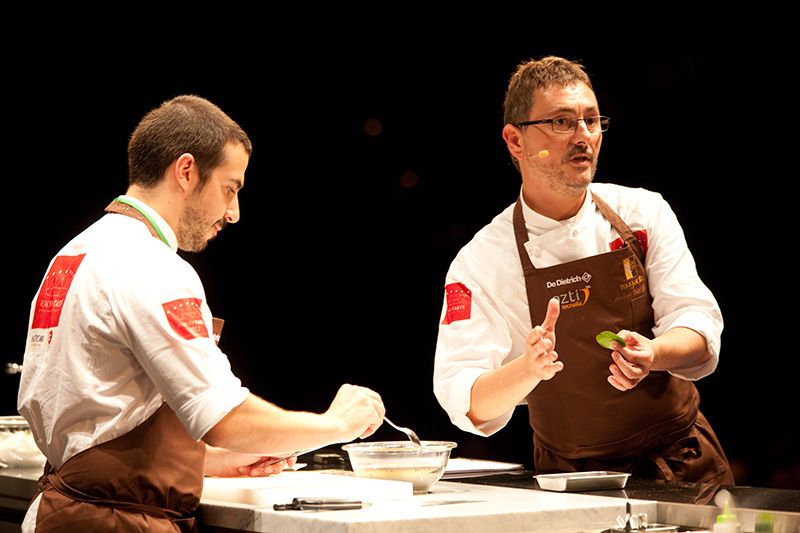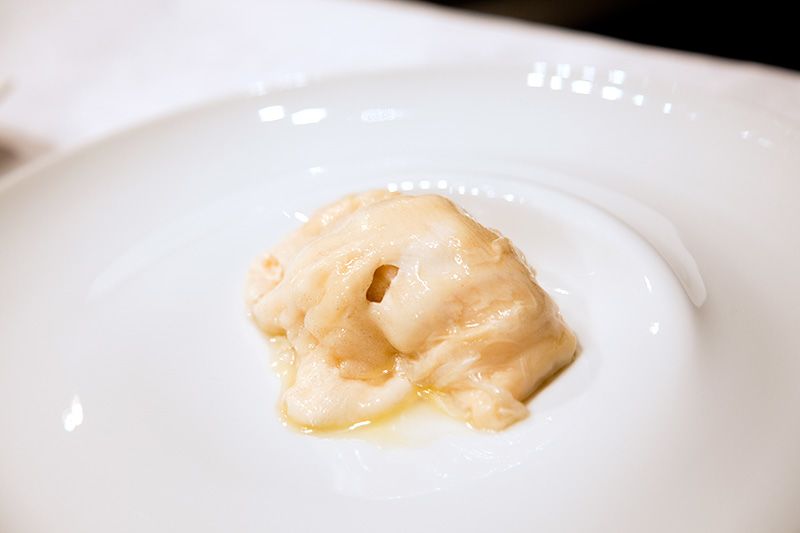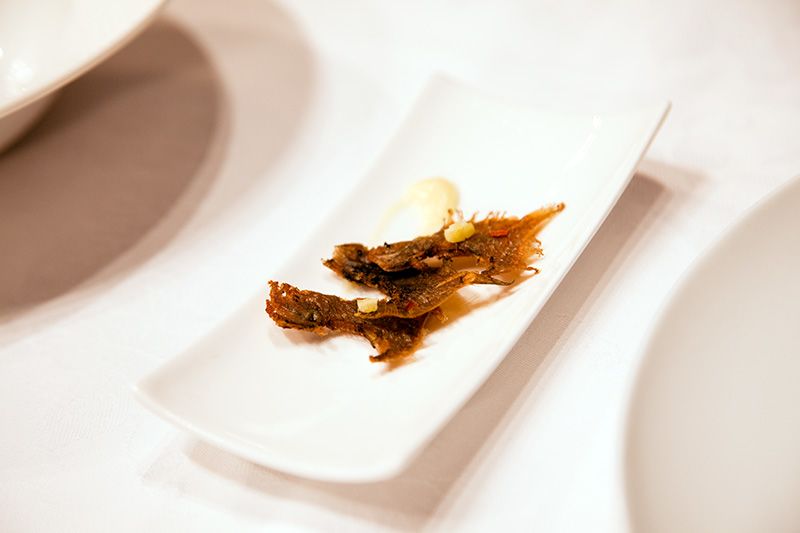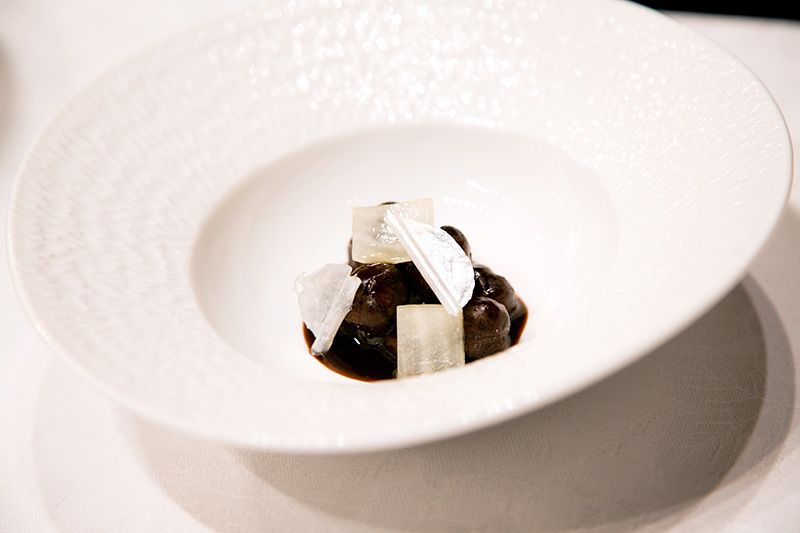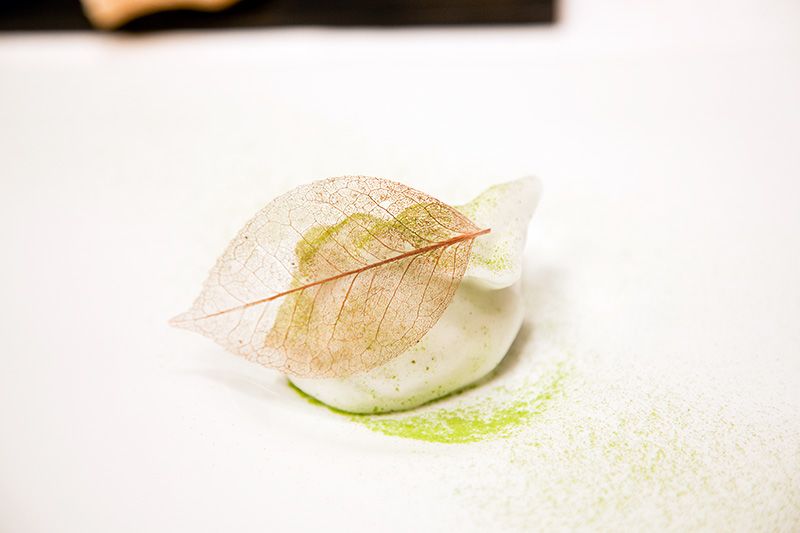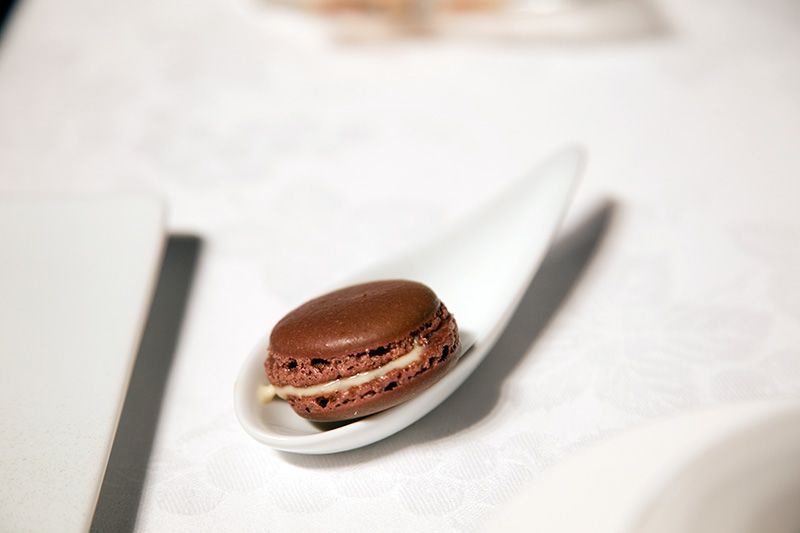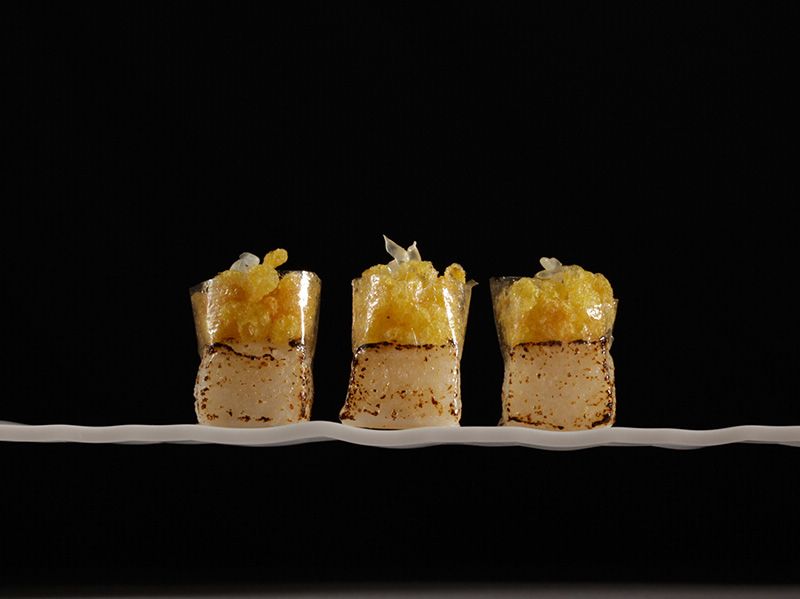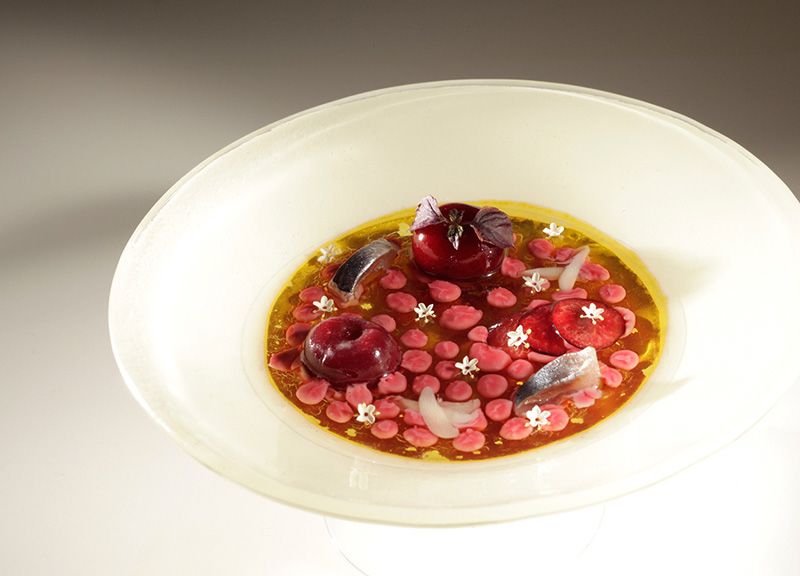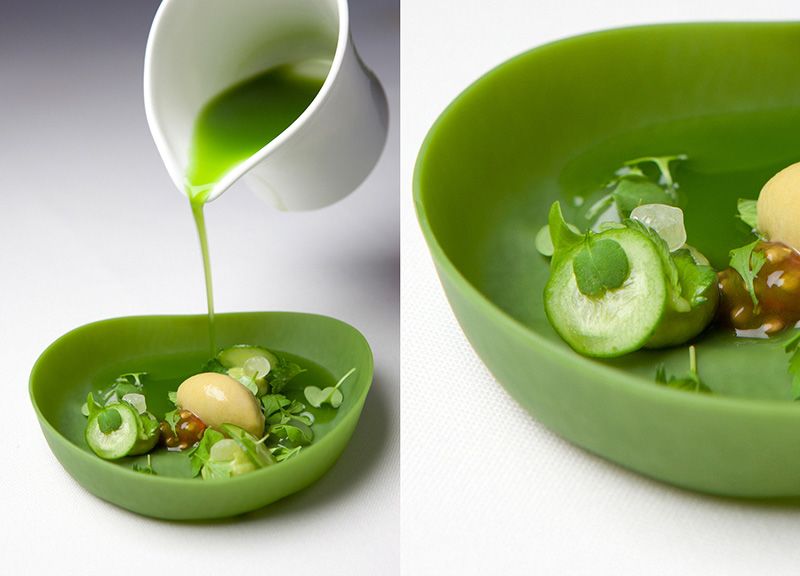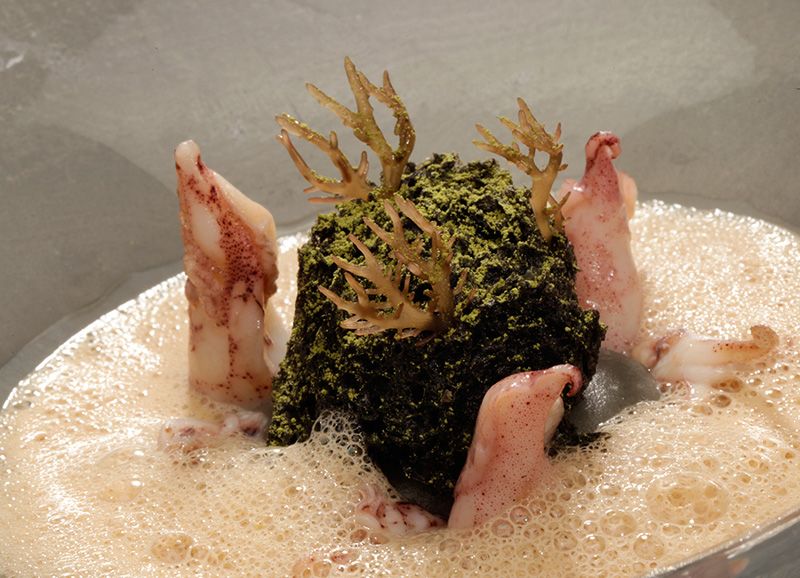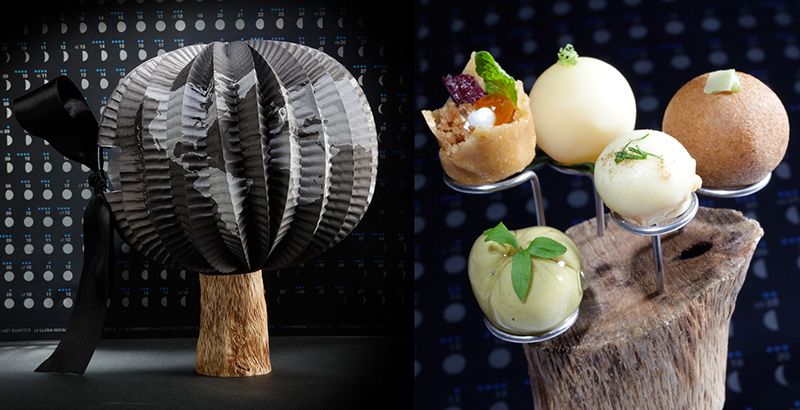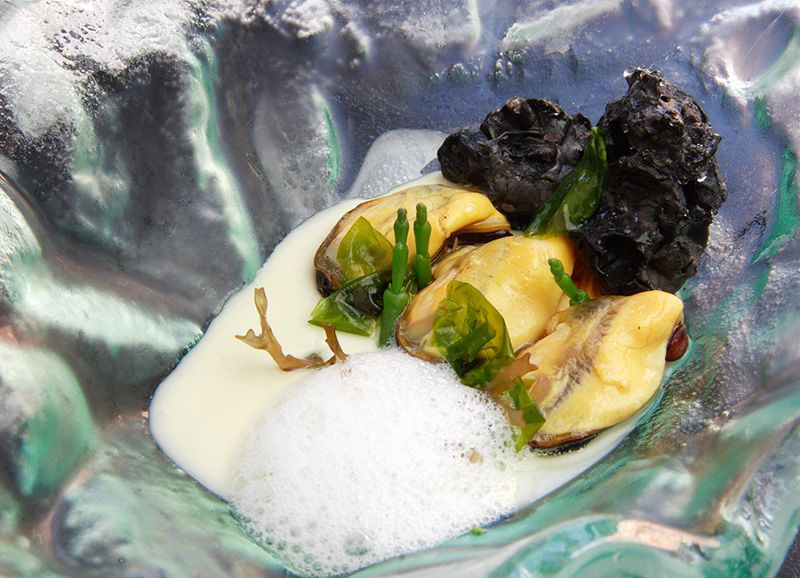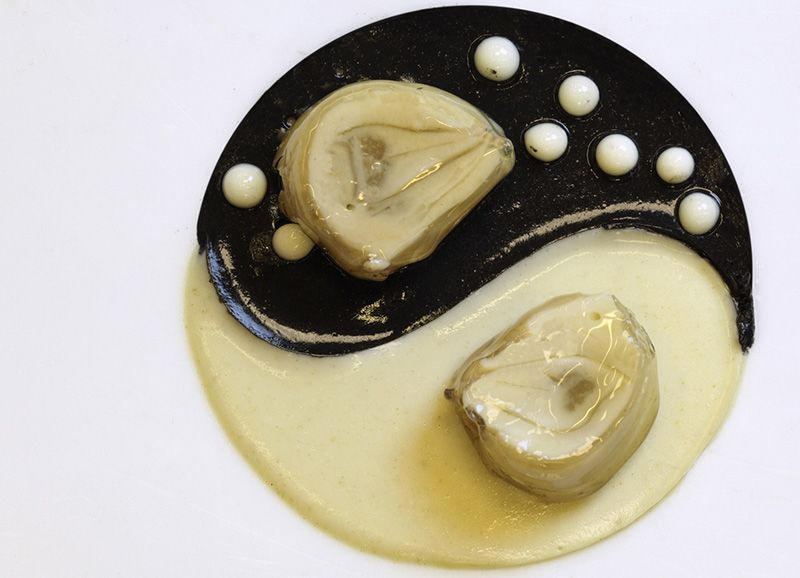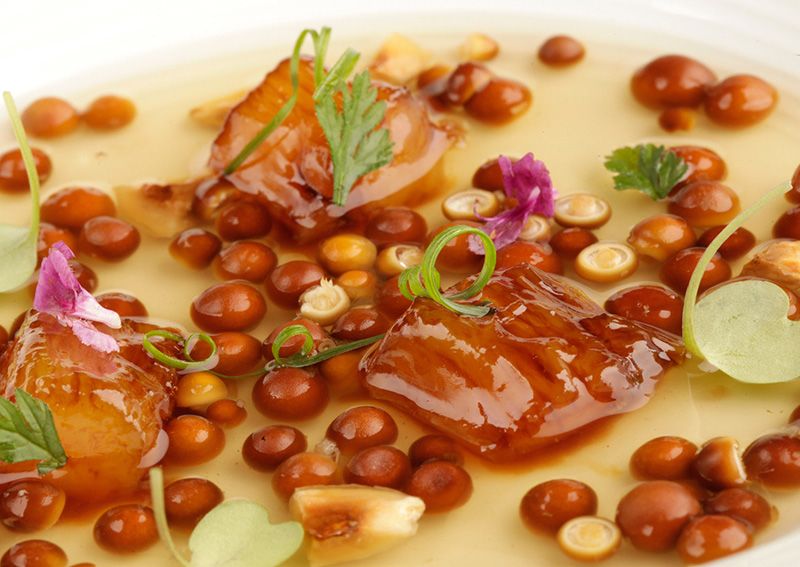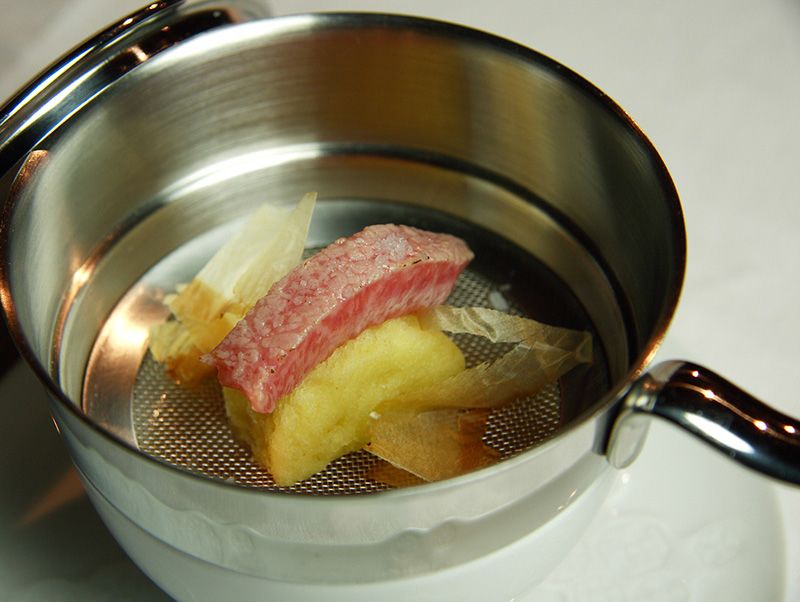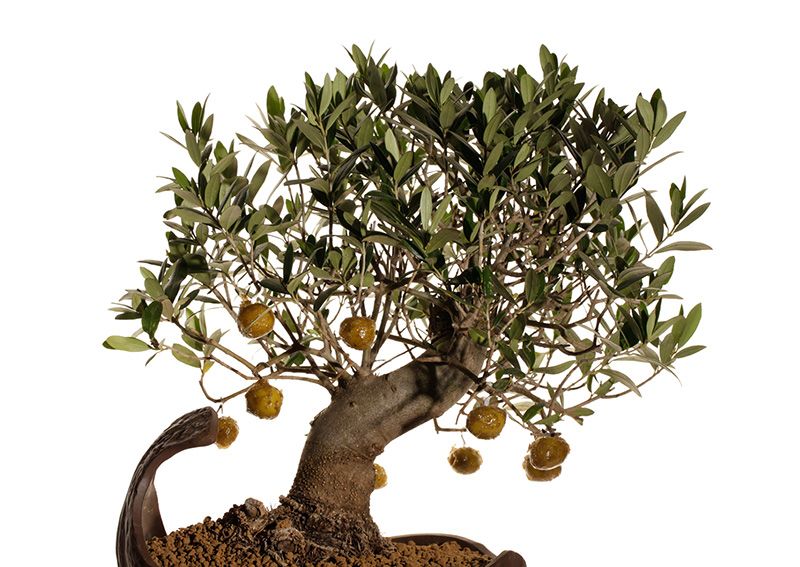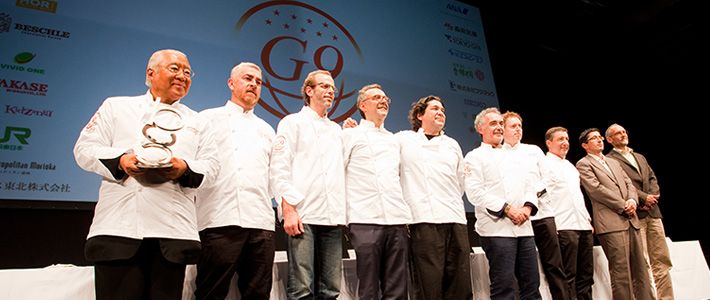
World’s Top Chefs Work Wonders with Japanese Ingredients
Culture Lifestyle- English
- 日本語
- 简体字
- 繁體字
- Français
- Español
- العربية
- Русский
World’s Top Chefs Come to Tokyo
The World Summit of Gastronomy
In the Basque region of Spain, there is an organization dedicated to culinary research and innovation called the Basque Culinary Center. One part of the BCC is the International Advisory Council, composed of the best chefs from nine countries: Spain, Italy, Britain, United States, France, Peru, Denmark, Brazil, and Japan. This group of nine chefs is called the G9. The first World Summit of Gastronomy was held in Tokyo in 2009. The third summit, Tokyo Taste 2012, was attended by six members of the International Advisory Council, including Dan Barber, nutrition advisor to President Obama. Five special guests also attended, including Sven Elverfeld, from the German restaurant Aqua. From September 22 to 25, a variety of events related to the summit were held in Sendai and Tokyo.
Did you know that there are “summits” in the culinary world too? One which has garnered much attention is “The World Summit of Gastronomy,” which debuted in 2009. The third summit, called “Tokyo Taste,” was held in 2012.
The lineup of chefs and culinary masters from across the world at the latest event was impressive, including many chefs appearing on the prestigious “World’s 50 Best Restaurants” list compiled by the British magazine Restaurant–an honor sometimes referred to as the cooking world’s equivalent of the Oscars.
This summit is an important opportunity for chefs from all over the world to meet and mingle. This year’s event had special meaning because it also generated support for recovery efforts following the March 11 earthquake. The summit was held in Sendai, one of the cities heavily damaged by the tsunami. For the chefs that attended, the event also served as an opportunity to learn about the ingredients from the Tōhōku region. Hattori Yukio, a member of the “G9” (see inset) and head of the summit’s executive committee, stressed the “crucial importance today of paying attention to the way the Japanese cook and how think about ingredients.” Let’s take a closer look at what these chefs from abroad did with Japanese ingredients.
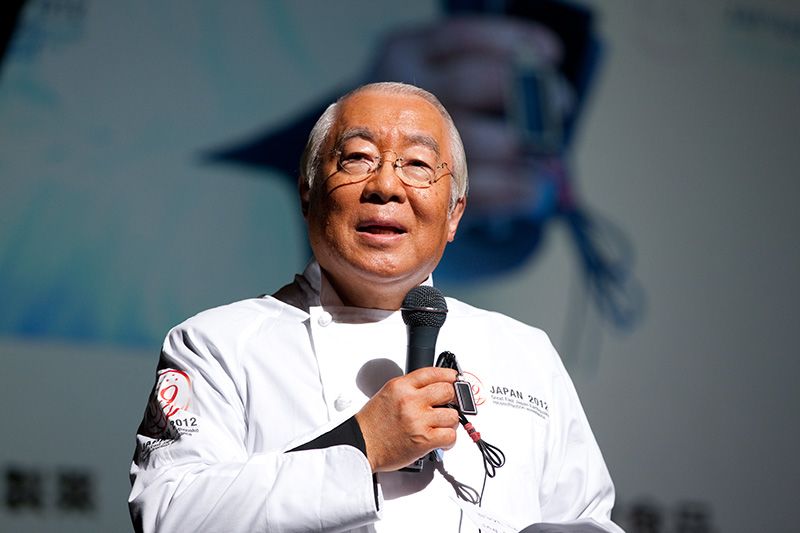 Hattori Yukio, head of the summit’s executive committee
Hattori Yukio, head of the summit’s executive committee
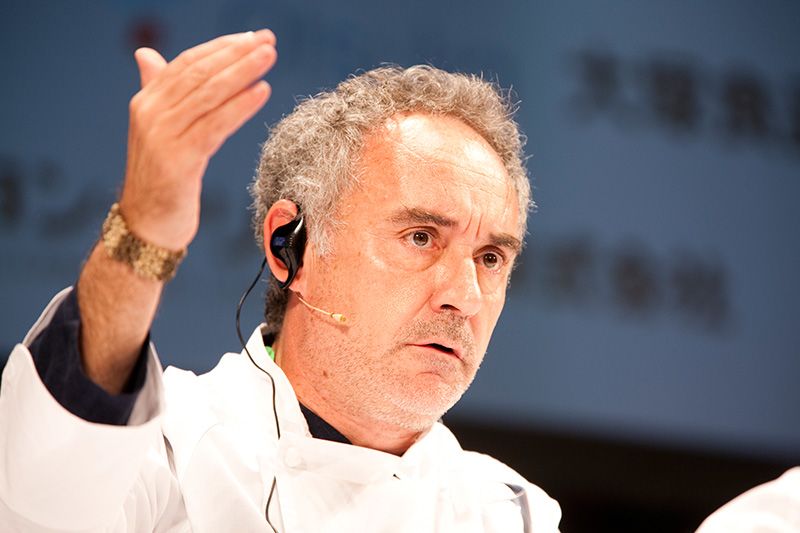 Ferran Adrià, head chef of the restaurant El Bulli in Spain (closed in July 2011), which had waiting lists so long it was almost impossible to secure a reservation. As head of the G9, he stressed the importance of education among chefs.
Ferran Adrià, head chef of the restaurant El Bulli in Spain (closed in July 2011), which had waiting lists so long it was almost impossible to secure a reservation. As head of the G9, he stressed the importance of education among chefs.
Inspiration from Unlikely Places
One of the invited chefs who was particularly in the limelight was Andoni Aduriz of the Mugaritz restaurant in Spain (ranked 3rd place in the 2012 Restaurant list). Aduriz provided a demonstration, using katsuo (skipjack tuna), sea urchin, black soy beans, kuzu (a vine native to Southern Japan), and other ingredients, all very familiar to the Japanese. What he did with those ingredients, though, was very original and would not have occurred to the average Japanese. He made bread with the kuzu and a sweet dish with the sea urchin. Aduriz stressed the importance of being open to fun and surprises when cooking. With regard to Japanese cuisine, he said, “I find it poetic how Japanese culinary techniques can express the changing seasons through each dish,” and emphasized the great amount of culture and feeling that goes into Japanese cooking.
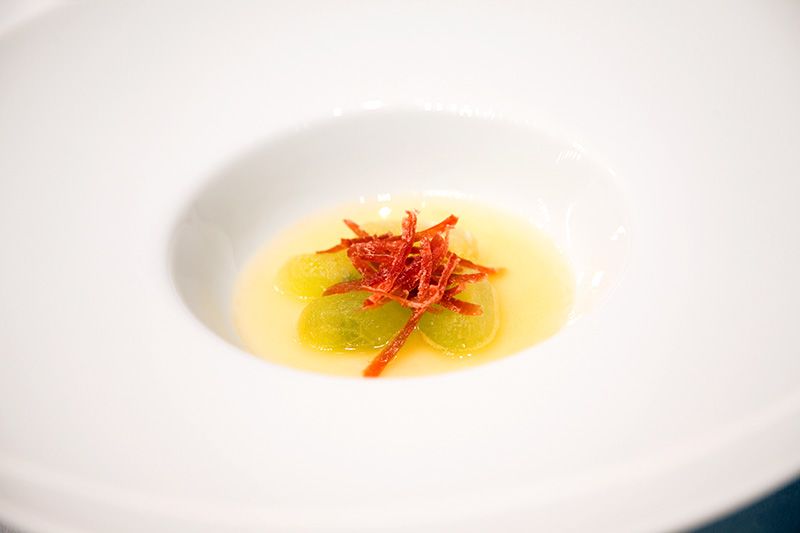
Grapes with melon garnished with strips of katsuo (skipjack tuna)
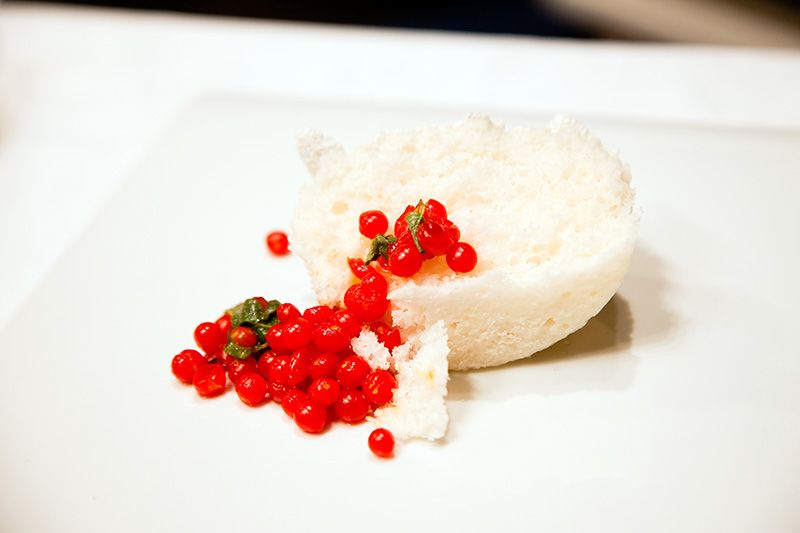
Bread made with kuzu and topped with sautéed mini tomatoes
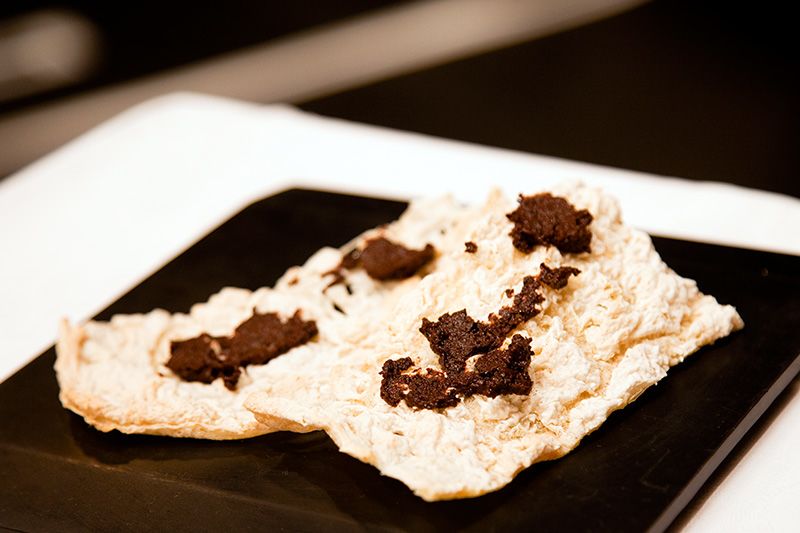
Kuzu and dried Ibérico pork gelatin used to form a type of senbei (cracker) topped with olives
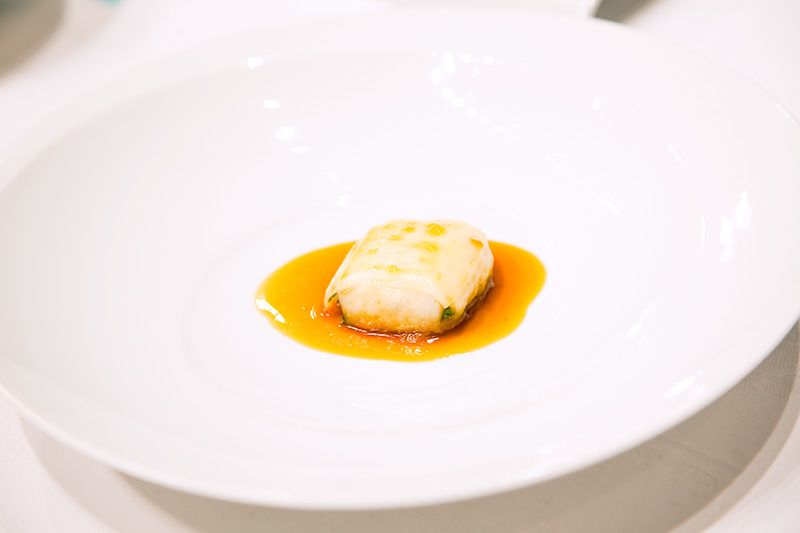 Ravioli made with rice sheets and wrapped in herbs
Ravioli made with rice sheets and wrapped in herbs
Olive Bonsai Trees and Turtles in Brazil
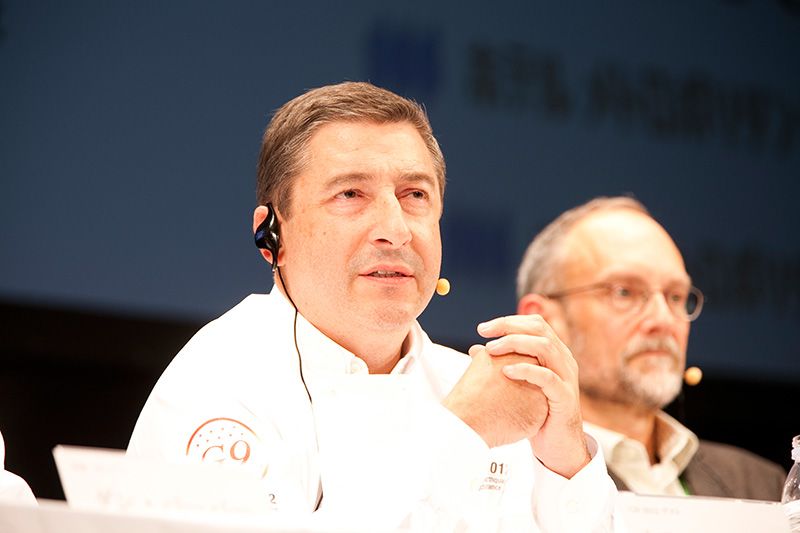 Another famous chef at the summit was Joan Roca from the restaurant El Celler de Can Roca in the city of Girona in Catalonia, Spain. The restaurant, which placed second on the “World’s 50 Best Restaurants,” is owned by Roca and his two brothers. At the event, Roca showed slides of some of his unique creations (see the photo gallery) made with typical Japanese ingredients like wasabi, soy sauce, maguro (tuna), black garlic, and the citrus fruit yuzu. What really caught everyone’s eye was his “Olive Bonsai” creation, featuring olives stuffed with anchovies that were dangling from the branches of a real olive tree. This is apparently one of the standard appetizers at his restaurant.
Another famous chef at the summit was Joan Roca from the restaurant El Celler de Can Roca in the city of Girona in Catalonia, Spain. The restaurant, which placed second on the “World’s 50 Best Restaurants,” is owned by Roca and his two brothers. At the event, Roca showed slides of some of his unique creations (see the photo gallery) made with typical Japanese ingredients like wasabi, soy sauce, maguro (tuna), black garlic, and the citrus fruit yuzu. What really caught everyone’s eye was his “Olive Bonsai” creation, featuring olives stuffed with anchovies that were dangling from the branches of a real olive tree. This is apparently one of the standard appetizers at his restaurant.
Another guest chef was Alex Atala from Brazil’s super-popular restaurant D.O.M. (fourth on the Restaurant list). Coming from Sao Paulo, which has a large Japanese immigrant population, Atala was exposed to Japanese food and culture at a young age. The first thing that he learned from Japan was the preparation of the soft-shelled turtle suppon. He recalled that the first time he tasted the dish, he imagined that a lot of spices and flavorings had been used in its preparation, and was surprised to discover that the methods used were in fact very simple. At his restaurant in Brazil, they have a dish that uses a kind of turtle from the Amazon as a substitute for suppon. Alex Atala and his chefs regularly go into the Amazon to collect turtles, and while there they also gather wild herbs for their culinary creations.
Culinary Art at the Next Level
Chefs of this caliber find inspiration and artistic direction from unusual sources. Massimo Bottura from the Osteria Francescana restaurant (ranked fifth), said that his experiences at a traditional Japanese restaurant where he drank sake from bamboo leaves and looked at calligraphy provided him with much to think about for his culinary endeavours. His descriptions were also poetic; he described the yuzu-flavoured soup he tried as “like the feeling of a comforting breeze at the start of Autumn” and “like chrysanthemum leaves moist with tears.”
The dishes unveiled by the chefs at this summit were so creative that it was difficult to believe that they had been made with the Japanese ingredients that we are familiar with. Their work and their artistry created something entirely new. Considerable imagination was used to break free from preconceived notions and take the culinary process to a new level.
The 2013 World Summit of Gastronomy will be held in New York, and Brazil is set to host the event the following year. These upcoming events may offer Japanese chefs a chance to delight and surprise audiences at the host venues, just as their counterparts did at the 2012 summit in Tokyo.
(Photos by Kawamoto Seiya. Photos in the photo gallery provided courtesy of El Celler de Can Roca.)
